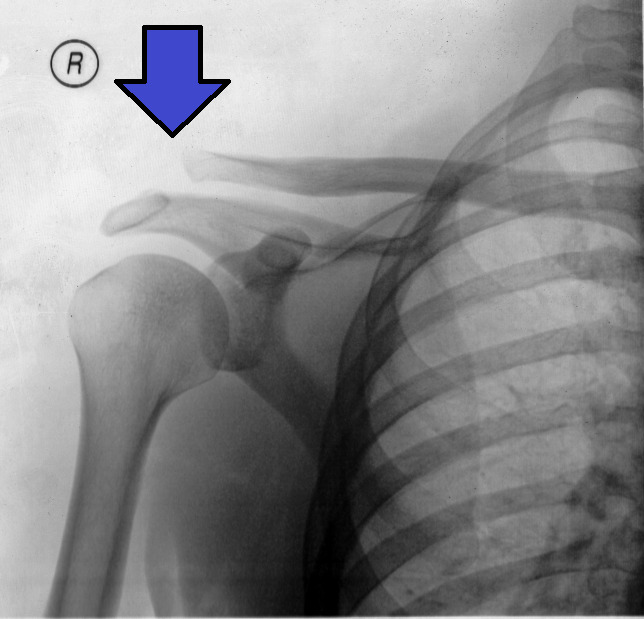Playlist
Show Playlist
Hide Playlist
Rotator Cuff Injury
-
Slides Classic fractures Special Surgery.pdf
-
Download Lecture Overview
00:01 Let's move on to a very common injury called the rotator cuff injury. 00:06 Rotator cuffs are most often related to degenerative wear and tear, especially in middle aged men. 00:13 Here you see a baseball player about to pitch. 00:17 Sometimes rotator cuff injuries are associated with overuse, generally in athletes. 00:24 Particularly with repetitive overhead motions. 00:27 This is common with pitchers, weightlifters, for example. 00:31 And of course, it can be traumatic. 00:36 Rotator cuff anatomy is actually quite complicated, but it came to a contains several tendons and several muscles, the supraspinatus, the subscapularis, teres minor and infraspinatus. 00:51 This is behind the image and not shown. 00:55 This rotator cuff combination of muscles and tendons stabilize your shoulders. 01:02 For rotator cuff injuries, the supraspinatus tendon is most commonly injured. 01:07 You can elicit this pain by asking a patient to do ABduction or abduction above the head. 01:13 Typically speaking, they'll generally feel pain and stop emotion. 01:21 This is called the arc test, have the pain, their pain will be present past 90 degrees of abduction. 01:27 Try it yourself. 01:28 Maybe you will diagnose rotator cuff tears in yourself. 01:34 Here's some imaging techniques. 01:36 Unfortunately, because it's the tendon injury, most plain X-rays are not helpful. 01:44 There is increasing use of what's called dynamic ultrasound as the title sounds, the ultrasound has done over a range of motion. 01:53 Particularly in the ABduction or abduction past 90 degrees when the pain is elicited, while may be able to see tears or edema around the ligaments. 02:04 Ultimately, MRIs are usually performed. 02:07 In this image, the white arrow points to an area where on T2 weighted image there's edema. 02:13 And edema is an indirect evidence that there's swelling and potentially ligamentous injury in the rotator cuff. 02:21 Here you see the ligament wrapping around the glenohumeral joint. 02:26 Remember, that the rotator cuff is very important for stability of the shoulder joint. 02:34 How do we treat rotator cuff tears? Well, vast majority of the time Physical Therapy and Rehabilitation. 02:40 This can be combined with nonsteroidals, ice, range of motion exercises, and judicious rest. 02:48 Remember, we don't want a frozen shoulder. 02:50 So we do encourage our patients to continue moving them. 02:54 Surgery is an option for some traumatic tears specifically in younger patients or in patients that fail conservative measures.
About the Lecture
The lecture Rotator Cuff Injury by Kevin Pei, MD is from the course Special Surgery.
Included Quiz Questions
Which of the following tendons is the most commonly torn tendon in rotator cuff injuries?
- Supraspinatus
- Teres major
- Infraspinatus
- Subscapularis
- Teres minor
The arc test in rotator cuff injuries may show which of the following findings?
- Pain past 90 degrees abduction
- Pain past 80 degrees abduction
- Pain past 60 degrees abduction
- Pain past 40 degrees abduction
- Pain past 10 degrees abduction
Customer reviews
5,0 of 5 stars
| 5 Stars |
|
5 |
| 4 Stars |
|
0 |
| 3 Stars |
|
0 |
| 2 Stars |
|
0 |
| 1 Star |
|
0 |





